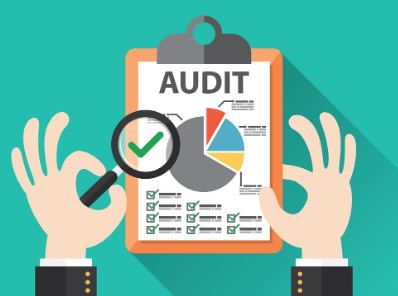Do you ever wonder how exactly auditors go about reviewing the financial statements of a company? The answer is found in the audit process. Audit procedure refers to structured procedures/tests that are conducted by the auditors to obtain adequate, relevant evidence. This evidence can assist them to opine as to whether the financial statements are not materially misstated, be it by error or fraud.
In this blog, we will deconstruct the meaning of audit procedures and several types of audit procedures, and practical examples of how an auditor, when examining a case, chooses which audit procedures to use.
What are the AUDIT Procedures?

Audit procedures refer to the steps and procedures that are followed by auditors to gather evidence and test the correctness, completeness, and soundness of financial data. The ultimate aim is to aid in the independent view of the auditor on the true and fair view of the financial reports given by the client on the financial performance and position of the client.
Audit procedures Types
Typically, there are many audit procedures, several of which can be used by auditors simultaneously, to pursue their goals. Let us take a look at the most widespread kinds (and real-life examples).
1. Analytical Procedures
Analytical procedures include comparing financial information to an expectation formulated by the auditor in terms of a trend, ratio, or industry benchmark. The procedures assist in detecting abnormal fluctuation or mismatches.
2. Confirmations
Confirmation procedures require the third party to ask an independent third party to verify balances or transactions. This gives an outside, objective specification.
Context With regards to a balance of cash in a company, auditors can enquire with the bank for a written confirmation of account balances. That way, just as customer balances in the accounts receivable can be checked with the customers themselves.
3. Inquiry
Investigation involves getting information directly from the management or employees. Although it is an insightful tool, inquiry is not in itself sufficient audit evidence.
For example, the auditors may want to speak with the CFO about a company’s revenue recognition policies or with a warehouse manager about the disposal of old inventory. This information generally causes them to use additional and more 41 trustworthy techniques.
4. Inspection of Records or Documents
Commonly, auditors check invoices, contracts, books of accounts, or other vouchers or documents which confirm the occurrence and truth of events or transactions recorded in the accounts. Examination verifies whether transactions are evidenced by proper documents.
5. Inspecting Assets
This step includes a physical verification of “hard” assets such as machinery, inventory, or vehicles. Inspection provides compelling, direct evidence of existence — but not ownership or value.
6. Observation
Observation, instead, applies to observing a customer’s processes and controls at work in practice, unlike inspection. It can be used to evaluate whether employees adhere to the internal procedures in place.
7. Recalculation
In recalibration, financial statement auditors recalculate numbers as a separate step to check the accuracy of the numbers in the financials.
Example: Auditors may recalculate interest on a loan by computing interest using the contract rate on the outstanding loan balance and comparing it to the client’s recorded interest expense.
8. Reperformance
Reperformance takes it a step further with the auditors performing independently from the control activities the client has performed to ensure controls are functioning properly.
Illustration: An auditor can perform a bank reconciliation, which is done by management, and make sure that the figures tally.
9. Cutoff Testing
Cutoffs help to ensure that tools are put up in the correct period. This is especially applicable to revenues, expenses, or anything next to year-end where mistakes or fudging could slant figures.
Illustration: If merchandise in transit on December 30 was recorded as a January sale, the cutoff was incorrect, and an auditor would detect the misstatement.
10. Completeness Testing
Completeness tests verify that all transactions and liabilities or assets to which they relate are included in the financial statements.
Illustration: A post-balance sheet date review of payments to suppliers might disclose liabilities to suppliers arising before year-end but not recorded as a liability.
When are Different Audit Procedures Used?
It is the type of approach that determines the selection of the tests of control and substantive procedures for the risk involved and the assertion under consideration. For instance:
- Analytical techniques help plan for identifying unusual areas and in the wrap-up stage for assessment of reasonableness as a whole.
- Confirmation and recalculation are the means of showing that in existence and truth, there is assured existence and accuracy.
- What is observation and reperformance when doing control testing?
- Cutoff and completeness tests are important when the timing of recognition is a significant risk.
Final Thoughts
It is audit procedures that form the base for any strong audit. They provide auditors with sufficient evidence to test financial reporting assertions, and then render an independent opinion. From analysis to physical review, each of these methods serves a different purpose and also offers different levels of confidence.
For companies, knowledge of the audit process is so much more than a matter of complying – it instills confidence with various stakeholders, including investors, lenders, and regulators. Auditors need to get procedures right to be able to not only find errors or fraud, but also to provide assurance that the audit is reliable.









